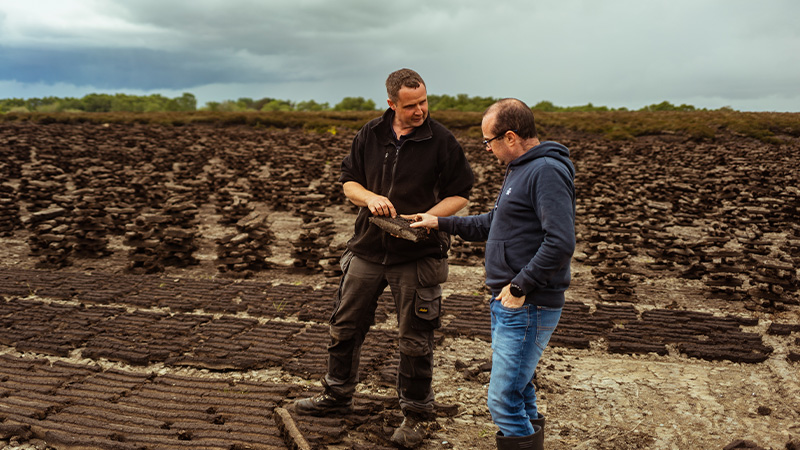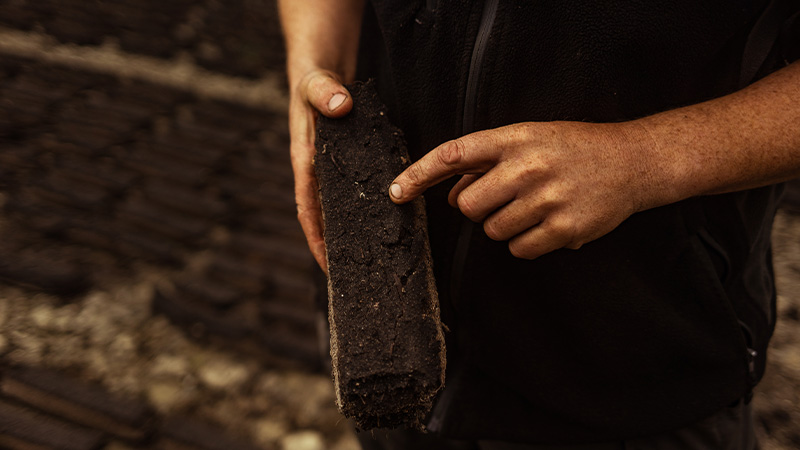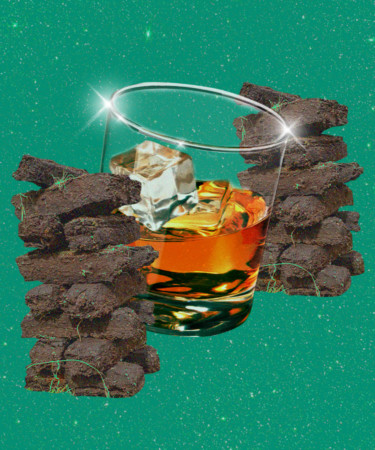“I’ve been trying for 10 years now to get maltsters to make peated Irish malt, but it hasn’t happened,” one of Ireland’s most prominent distillers tells me during a visit in March, his voice redolent of melancholy exasperation. “I’d love to use Irish peat and peated Irish malt … but it could take decades.” Except after more than five years of quiet machinations, one distillery has already pieced the puzzle together.
Mark Reynier’s Waterford Whisky is set to release a pair of peated Irish single malts this fall; they’re poised to become the first modern Irish whiskeys to actually be made from Irish barley that was smoked with sultry Irish peat. While there are other peated Irish whiskeys on the market, such as The Connemara and Teeling Whiskey’s Blackpitts, the raw materials used in these bottlings don’t come from the Emerald Isle.
It’s a part of Ireland’s whiskey history, but as with so much of the rest of that legacy, it was lost amid the near-catastrophic downturn for the category in the mid-20th century. “Peat was the primary fuel source of rural Ireland, and it was also once the primary fuel source for kilning Irish malt whiskey — just as it was for Scotch,” says Mark Newton, Waterford’s head of communications.

Via their long established and intensive partnership with Minch Malt, whose parent company Boortmalt also includes Glenesk Maltings in Scotland, Waterford was able to begin the process of creating a modern first. “We love a challenge, particularly when people said it couldn’t be done,” says David O’Hare, Minch Malt’s craft malting and brewing manager.
The project required collaboration up and down the distillery’s supply chain. Neil Conway, Waterford’s head brewer and production manager, tracked down a commercial turf (Irish slang for peat) supplier from County Kildare. “He had never sold turf to anyone like us,” Conway says of their initial partner, Niall O’Carroll.
Because O’Carroll’s turf was sold as commercial fuel, the way it was cut and prepared wasn’t ideal for whiskey production. “It was way too dry to be used for the peating process,” O’Hare says. “We had to fly in an expert from Scotland to show the guys cutting the Irish peat how best to do so. Moisture level is key. We need the peat to produce smoke when burned, and not flames, as this burns off any phenols.”
All the while, the distillery’s same principles had to be followed in terms of the traceability of raw ingredients down to a strict farm-by-farm level. Waterford distills single farm, single barley variety whiskeys that can be released as standalone expressions to showcase the differences in flavor stemming from terroir and barley type. “If we’re going to do it, let’s do it right,” says Ned Gahan, Waterford’s head distiller. “It’s Irish barley. We’re sourcing Irish turf. We still have full traceability.”
The use of Irish peat fits into the distillery’s Arcadian Barley series, which has included organic barley, biodynamic barley, and heritage barley varieties. “It’s about the old ways of farming and the old ways of whiskey,” Newton says. “Waterford isn’t just a terroir project. Terroir is the engine, baked into the fabric of our methodology, but what we’re actually after is exploring all of the sources of natural flavor from barley.”

Those same individual farm whiskeys, of which the distillery produces dozens per year, can then be used as blending components in the creation of Waterford’s flagship cuvées. These are products that represent the culmination of its efforts and exhibit the full flavor range that the distillery is able to produce.
While Reynier originally found prominence in the spirits world thanks in part to a bigger-and- bolder-is-better approach with Islay distillery Bruichladdich, he was never automatically inclined to follow the same ethos with Waterford. In fact, Bruichladdich’s Octomore and its ever-increasing PPM (phenol parts per million) was meant more as an insider’s gag than an honest innovation, though the public, and the peat heads in particular, swarmed to the idea.
In that aftermath, Reynier was dead set against the idea of using peat for Waterford, hoping to avoid any sideshow attraction while focusing his flavor exploration on the realms of terroir and barley variety. Gahan recalls a combative 2016 meeting where the idea was first broached, but it wasn’t until a full five years later (with that initial peated whiskey coming of age) that the distillery team tasted through their stash and decided it was worthy of a standalone release.
“It’s good enough to be a Single Farm,” Gahan said, referencing the distillery’s Single Farm Origin series of whiskeys, as we tasted cask samples together in Waterford’s warehouse this March. At the time, the fate of a potential or theoretical release had not yet been determined. The whiskey from the cask was tantalizing, with an earthy peat smoke, rich with soil and an underlying malted sweetness. It was just too good to ignore, and now the whiskey world at large will get its first taste with two single farm peated whiskeys set to make their debuts.
“I believe there is a big future for peated Irish malt,” O’Hare says. “Irish whiskey is undergoing a renaissance at present and peated Irish whiskey produced using 100 percent Irish barley and 100 percent Irish peat was a taste lost to history up until this point.”
That history gets rewritten this fall, as Waterford’s Peated: Fenniscourt 1.1 (50 percent ABV, 38.4 PPM) and Peated: Ballybannon 1.1 (50 percent ABV, 47 PPM) hit retail shelves in October, with 1,000 bottles of each available in the U.S. amid a larger global release.
